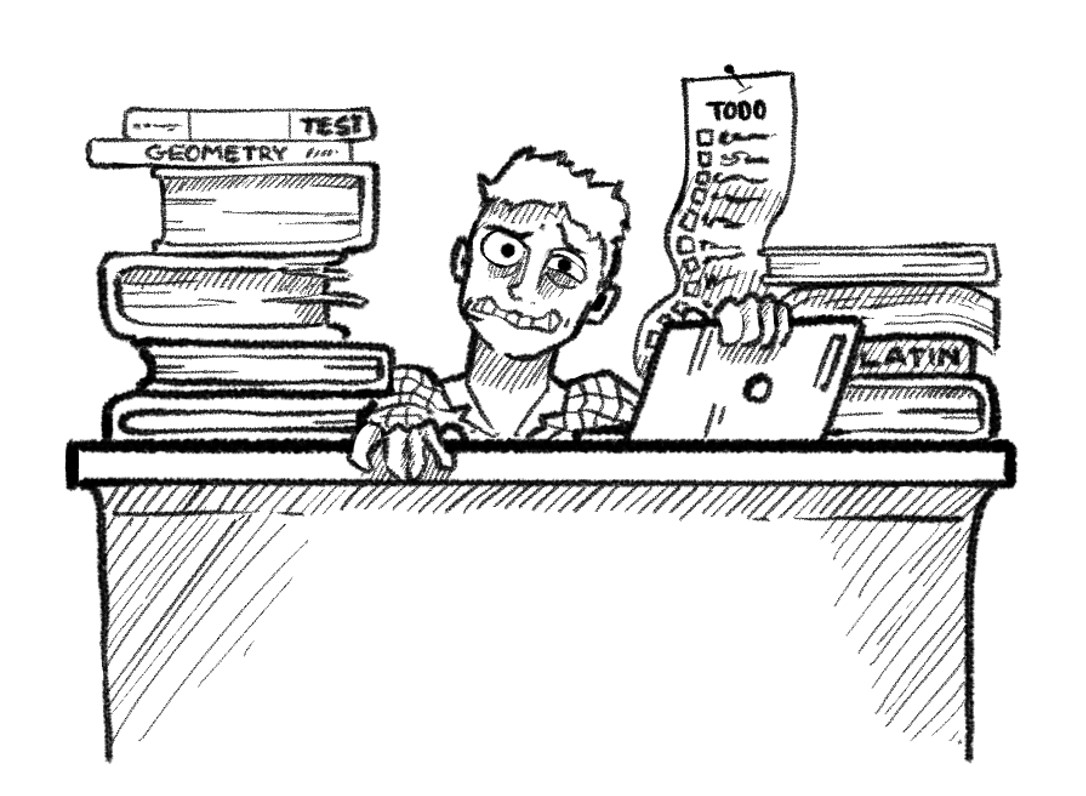A Lakesider is a student athlete, with emphasis on both the student and simultaneously athlete part. A Lakesider is dedicated and a go-getter, and during comments meetings, a Lakesider is “a pleasure to teach” and an “active participant in class.” But first and foremost, a Lakesider is overworked.
Indeed, only a few years after its centennial, Lakeside is starting to closely resemble my hometown of New York City — otherwise known as the city that never sleeps. Coming from someone who chose to take a seventh academic class over ceramics, sometimes it’s our own doing. Still, the daily routine of Lakesiders has changed dramatically since 1919.
While the average Lakesider now sleeps for an average of 6–7 hours, back when Lakeside was a boarding school, bedtime was far earlier. Printed in the Maroon and Gold, a student-run chronicle detailing Lakeside’s early history (1919–1923), Lakesiders would “fall in” for showers at 4:30 p.m., eat dinner an hour later, and after 45 minutes of prayer and study hour at 7:00, would go to bed promptly at 9:00. A parenthetical was added to the bedtime clause, noting, “Another day has passed and we are happy!” 12 years later and Lakeside slightly loosened its dormitory rules, though admittedly not by much. Lunch was pushed from 12:15 to 12:25, dinner pushed half an hour later to 6:00, and two periods of study hall were added — one at 7:05 and another at 8:05 — shifting bedtime an hour later. Although a later curfew was most likely welcomed as a sign of possible independence by students at the time, it marks a turning point in Lakeside’s history where school consumes just a little bit more of the day.
As Lakeside transitioned from an all-boys boarding school to a day school, and then to coeducational, students’ schedules changed once more. In the early ’70s each day consisted of eight classes lasting 40 minutes each, with a 20 minute break for lunch at 12:15-12:35 or 1:00-1:20 that would’ve made it nearly impossible for me to cram in unfinished homework. While the school day technically ended at 2:40, periods 9 and 10 — which were occupied by athletics — finished at 4:10.
But Lakesiders, who we tend to associate with sleep deprivation in a modern context, were beginning to have a little too much time on their hands. In a letter to students and faculty, Upper School Director John Wharton noted that “this extra time … has resulted in an increase in non-excused departures from campus and a greater sloppiness in class attendance.” He believed that the independence students acquired alongside their schedule came at an observable cost to the order of the school.
Mr. Wharton made it clear in his letter that Lakeside needed a change, writing that “to ensure the academic excellence which is integral to Lakeside we are going to have to put together a schedule which is better balanced and more responsive to both the positive and negative aspects of non classroom time.” Just months later — thanks to students Bill Gates, Paul Allens, and Kent Evans — this change would be realized. In September of 1972, the board minutes happily reported that the “basic schedule is clearly established and printed … Earlier in the summer senior Bill Gates and Paul Allen accomplished ‘a real break-through in computer programming development that will serve us very well in the years ahead.’ By 1974, two years later, Lakeside had eliminated one daily period and significantly cut the number of free periods for students at both the Middle and Upper School campuses. If you ever need someone to blame for the fact that you don’t have an extra free period to watch “Gossip Girl,” look no further than Lakeside in the ’70s.
Of course, the creation of “Activity Time” during the day and the elimination of one daily period had significant consequences. In the past, Lakeside had offered journalistic education through a journalism class and Tatler, wherein students were provided ample time to pursue their journalistic passions. Although journalism still lives on at Lakeside, it exists in a different form, now consolidated to a 45-minute period every Tuesday. The same can be said for other classes that have been made into clubs — students are expected to accomplish the same level of work in much smaller designations of time. 40 years after administrators cut a free period from students’ schedules because a Lakesider with too much time to spare was “rowdy” and a “rebel,” free time has become a thing of the past. As evidenced from the consistent rise of SAT scores and consistent decrease of sleep, Lakesiders’ hobbies have shifted from collecting state quarters to padding college resumes as the pressure to attend a prestigious university reaches an all-time high nationwide. As our schedules changed, so have our lives: Lakesiders are no longer mischievous; they are overwhelmed.
We’re nearing the end of 2023, but every time I stop by the second floor of Pigott on my way to Tatler and pass the exhibit of Bill Gates’ programming work, I am thrown back to 1972. Each B-day morning as I make my way to my Modernism and the Harlem Renaissance elective, I make note of the fact that the cornucopia carved in stone above the door reads 1930, and I imagine what my class would’ve looked like as a dorm room. These relics around campus only serve to remind me that Lakeside has a past and a present. But what will Lakeside’s future look like? Will we, like Dr. Bynum’s Re-envisioning imagines, be a school focused on technological advancements? Using the city as a classroom? A school that leans towards the humanities? What will it mean to be a Lakesider then?
I suppose that is up to us.




